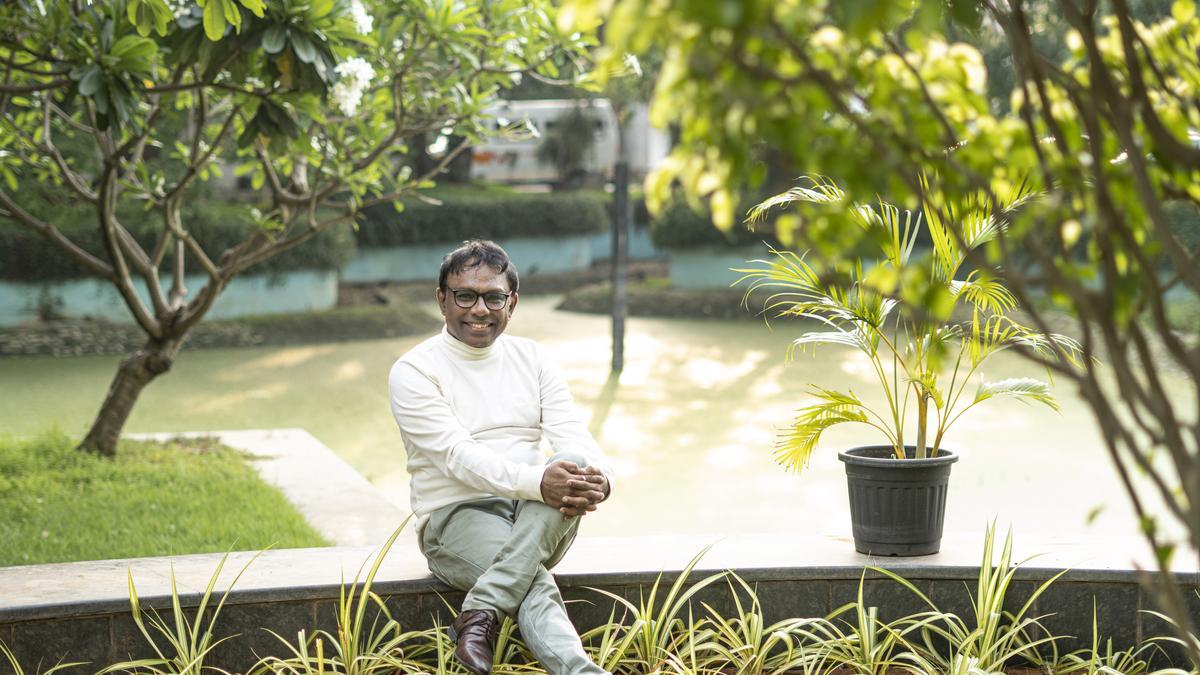
A myriad of possibilities can unfold over a simple coffee break, as was the case for renowned music composer Ramesh Vinayakam. At the Goethe Institute in Chennai, a casual conversation with double bass player Sebastian Grams and Jeremy Woodruff, currently at Graz University, turned into a revolutionary musical experiment. Ramesh began singing phrases from a Carnatic kriti titled ‘Thiruvarul thara varuvai’ and enquired if the tune seemed familiar. The response was one of confusion and curiosity – “It’s beautiful. The end sounds familiar, but we can’t put our finger on it,” they remarked.
The climax of this intricate musical puzzle left everyone stunned: the kriti bore the same notes as Ludwig van Beethoven’s iconic ‘Fur Elise.’ “To me, it proved something I believe in: the oneness of music,” reflected Ramesh, recalling his innovative composition, which he later uploaded on YouTube for the world to appreciate.
‘Thiruvarul thara varuvai’ is based on a raga that Ramesh has fondly named ‘Beethovanapriya,’ inspired by an intriguing question: what if Beethoven had been born in South India? This hypothesis led Ramesh to craft the kriti, using the melodic elements of the first section in A minor and adhering strictly to this composition. “Beethoven was a great inventor, and I believe he would have been captivated by the intricate microtonal gamakas of Indian music, which could enhance and transform his own music in unexpected ways,” he mused.
Ramesh performed ‘Thiruvarul thara varuvai’ during a lec-dem at the prestigious December music season shortly after its creation. However, it was in 2018 that the kriti gained considerable acclaim when Carnatic musician Abhisekh Raghuram sang it, accompanied by Mylai Karthikeyan on the nagaswaram and L. Ramakrishnan on the violin, receiving thunderous applause from the audience.
Throughout his illustrious career, Ramesh has ventured into the creation of ten new ragas, including Prathidwani, Madya Mohanam, and Dwi Niroshtra, to name a few. He is presently working on a raga employing microtonal swarasthana called Sruti Ranjani. “For me, inventing a raga is a natural progression in the evolution of Indian music.
. The ragas that are popular today did not exist at the outset. Their origins are shrouded in mystery – whether they emerged from a simple scale, a mesmerizing phrase, or an emotive lyrical thought that expanded into a raga. So, a raga cannot be considered a discovery, contrary to some beliefs,” explained Ramesh.
While continuing to work on new compositions, Ramesh is particularly enthusiastic about his passion project, the Gamaka Box Notation System (GBNS). This structured learning tool for Indian music facilitates the conceptual understanding of complex ideas. GBNS is central to Music Temple, a music technology company incubated at the Indian Institute of Technology Madras.
Ramesh’s prominence in the film music industry is highlighted by hits such as ‘Vizhigalil’ from Azhagiya Theeye, ‘Enna Idhu’ from Nala Damayanthi, and his work in the film Ramanujan. Despite his achievements, he is eager to take on more film music projects. “I am looking forward to doing a lot more movies and creating new music. I believe that music is the manifestation of divinity that already exists within us,” Ramesh stated passionately.
His innovative work on ‘Thiruvarul thara varuvai’ poses an evocative question that blurs the boundaries between Western classical music and Indian classical traditions: What if Beethoven, one of the Western world’s most celebrated composers, had been born amidst the rich musical traditions of South India? This intersection of cultures highlights a universal truth in music – its power to transcend boundaries, whether geographical, cultural, or otherwise. Through his creative genius, Ramesh Vinayakam continues to build bridges across these divides, inviting us all to experience the oneness of music.
As Ramesh forges ahead in his musical journey, his experiments and projects underscore the fluidity and interconnectedness of musical traditions. The convergence of Beethoven’s timeless melodies with the intricate beauty of Carnatic music stands as a testament to the enduring spirit of innovation in the world of music.












